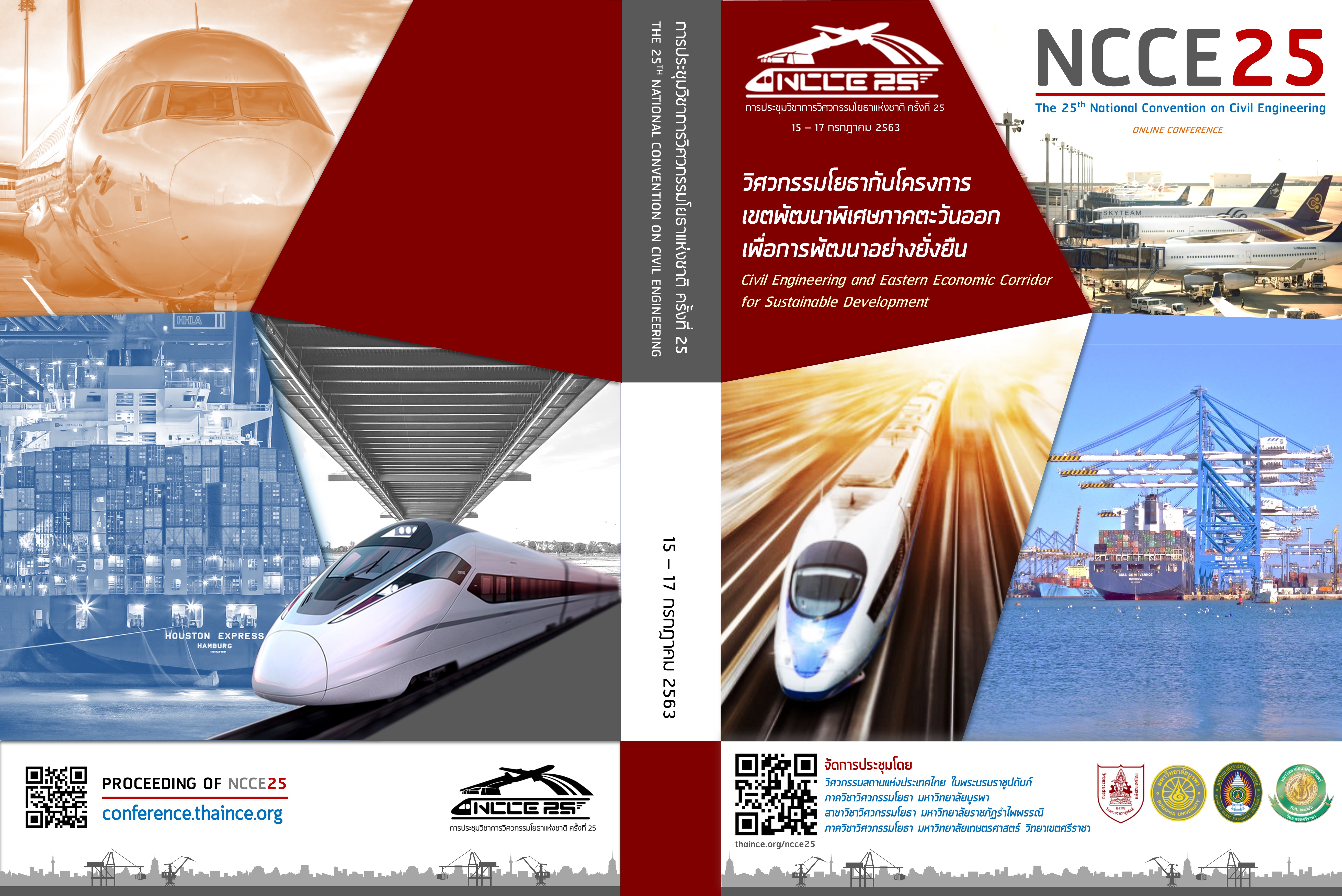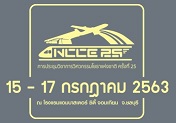A Study of Water Permeability on Porous Concrete Using Recycled Coarse Aggregates
Keywords:
Recycled aggregate, porous concrete, water absorption, compressive strength, voidAbstract
This paper presents the study of the leftover concrete for recycling by being an ingredient in the porous concrete instead of natural mineral aggregate tested in physical and mechanical properties by subdividing the leftover concrete and grading to 3 sizes; the rock which was left on a sieve 1/2 inches, 3/8 inches and number 4. The ingredient which was suitable for compressive strength and the water permeability of the porous concrete was determined by using cement paste 10, 15 and 20 percent capacity and the water cement ratio (W/C Ratio) of 0.30 was used for making an example cylindrical block with a diameter of 10 x 20 centimeter. The results showed that the compressive strength of recycled porous concrete depends on the stone size and the amount of cement paste. The recycled porous concrete will have compressive strength in the range of 23-95 kg/square cm. It is the result of the gaps in the coarse aggregate of rocks of the same size, including the old paste and mortar. Therefore, it has to require a large amount of coated cement paste and increased water absorption but there is a gap between the good cavity ratio in the range of 25 - 37 percent. As a result in a large value of water permeability the recycled coarse aggregate size 1/2 inch, which has the highest value equal to 0.989 cm/s, with the same amount of cement paste.
Downloads
References
รัฐศักดิ์ พรหมมาศ และคณะ, 2560, “การพัฒนาคุณสมบัติทางกลของคอนกรีตพรุนโดยใช้จุลินทรีย์ ประสิทธิภาพเป็นส่วนผสม”, วารสารมหาวิทยาลัยทักษิณ, ปีที่ 20, ฉบับที่ 2 กรกฎาคม – ธันวาคม, หน้า 75-84
วันชัย สะตะ และปริญญา จินดาประเสริฐ, “คอนกรีตพรุน : คอนกรีตที่เป็นมิตรกับสิ่งแวดล้อม”, วารสารวิชาการสมาคมคอนกรีตแห่งประเทศไทย, ฉบับที่ 29 ประจำเดือนธันวาคม 2559
วันชัย สะตะ และปริญญา จินดาประเสริฐ, การใช้เศษวัสดุเป็นมวลรวมหยาบในคอนกรีตพรุน, โครงการคณะ วิศวกรรมศาสตร์ มหาวิทยาลัยขอนแก่น, 2556
สำเริง รักซ้อน และปริญญา จินดาประเสริฐ, การวิจัยด้านคอนกรีตพรุนที่เป็นมิตรกับสิ่งแวดล้อม, โครงการ ทุนอุดหนุนวิจัยมหาวิทยาลัยเทคโนโลยีราชมงคลพระนคร, 2558
นันทชัย ชูศิลป์, “หน่วยน้ำหนักและกำลังรับแรงอัดของคอนกรีตพรุนผสมกะลาปาล์มน้ำมัน” วารสารการ พัฒนาชุมชนและคุณภาพชีวิต1, (1) : หน้า 97 – 106, ปี พ. ศ. 2556
Tijani, M.A., Ajagbe W.O., Ganiyu A.A., Agbede O.A., 2019, “Effect of Aggregate type on Properties of Pervious Concrete”, Journal of Modern Technology and Engineering, Vol. 4, No. 1, pp. 37-46
Tijani, M.A., Ajagbe W.O. and Agbede O.A., 2018, “Recycling Wastes for Sustainable Pervious Concrete Production”, Conference Paper-October 2018, NIEE CONFERENCE 2018 ,The Nigerian Institution of Environmental Engineers (NIEE)
Downloads
Published
How to Cite
Issue
Section
Categories
License
บทความทั้งหมดที่ได้รับการคัดเลือกให้นำเสนอผลงานในการประชุมวิชาการวิศวกรรมโยธาแห่งชาติ ครั้งที่ 25 นี้ เป็นลิขสิทธิ์ของ วิศวกรรมสถานแห่งประเทศไทย ในพระบรมราชูปถัมภ์



